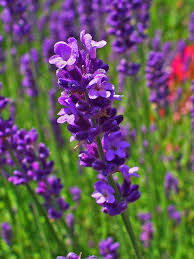COMPONENT COMPOSITION AND CONTENT OF ESSENTIAL OILS IN TWO SPECIES LAVANDULA (LAMIACE-AE) GROWN IN THE CRIMEA
Abstract
The aim of the investigation was to carry out a comparative analysis of the component composition and content of essential oil volatile compounds in Lavandula angustifolia Mill. and L. latifolia Medis. grown on the Southern Coast of Crimea.
The feedstock was collected in the phase of mass blossom. Essential oil was extracted from carefully chopped air-dry inflorescences according to the method of hydrodistillation by Ginsberg with further conversion for absolutely dry and fresh weight. Chemical composition was determined by gas chromatography with mass spectrometric detection.
It was found out that essential oil content in L. angustifolia and L. latifolia inflorescences varies 1,50–2,2% for fresh weight. Essential oil yield in L. latifolia was 27–29% higher.
Chromatographic separation of L. angustifolia essential oil let us to identify 54 terpene compounds and in L. latifolia - 53 compounds. The main components of L. angustifolia essential oils are linalyl acetate (42% of total components) and linalool (22%). Mass part of 1,8-cineole and camphor does not exceed 1,5%. The content of monoterpenes and sesquiterpenes was twice more than in L. latifolia oil. The main components of L. latifolia essential oils are linalool, camphor and 1,8-cineole.
Component composition and content of L. angustifolia volatile compounds testify high quality of its essential oils. Essential oil extracted from L. latifolia feedstock is not suitable for use in the perfume and cosmetics industry. However, it could be a source of natural linalool and high concentrations of biologically active camphor and 1,8-cineole make it valuable for phyto- and aromatherapy.
Downloads
Metrics
References
Либусь О.К., Работягов В.Д., Кутько С.П., Хлыпенко Л.А. Эфирномасличные и пряно-ароматические растения. Фито-, арома- и ароматотерапия. Херсон, 2004. 272 с.
Woronuk G., Demissie Z., Rheault M., Mahmoud S. Biosynthesis and therapeutic properties of Lavandula essential oil constituents // Planta Med. 2011. Vol. 77. Рp. 7–15.
Машанов В.И., Андреева Н.Ф., Машанова Н.С. Новые эфирномасличные культуры: справочное издание. Сим-ферополь, 1988. 160 с.
Государственная фармакопея СССР. Вып. 1. М., 1987. 335 c.
Jennings W., Shibamoto T. Qualitative analysis of Flavor and Volatiles by Glass Capillary Gas Chromatography. Aca-demic Press rapid Manuscript Reproduction, 1980. 472 p.
Фурса Д.И., Фурса В.П. Агроклиматическая характеристика района агрометеостанции «Никитский сад». Минск, 1992. 41 с.
Lis-Balchin M. Lavander. The Genus Lavandula. Medicinal and Aromatic Plants– Industrial Profiles. London, 2002. 268 p.
Cavanagh H.M.A. Wilkinson J.M. Biological activities of Lavender essential oil // Phytother. Res. 2002. Vol. 16. Pp. 301–308.


This work is licensed under a Creative Commons Attribution 4.0 International License.
The authors, which are published in this journal, agree to the following conditions:
1. Authors retain the copyright to the work and transfer to the journal the right of the first publication along with the work, at the same time licensing it under the terms of the Creative Commons Attribution License, which allows others to distribute this work with the obligatory indication of the authorship of this work and a link to the original publication in this journal .
2. The authors retain the right to enter into separate, additional contractual agreements for the non-exclusive distribution of the version of the work published by this journal (for example, to place it in the university depository or to publish it in a book), with reference to the original publication in this journal.
3. Authors are allowed to post their work on the Internet (for example, in a university repository or on their personal website) before and during the review process of this journal, as this may lead to a productive discussion, as well as more links to this published work.











